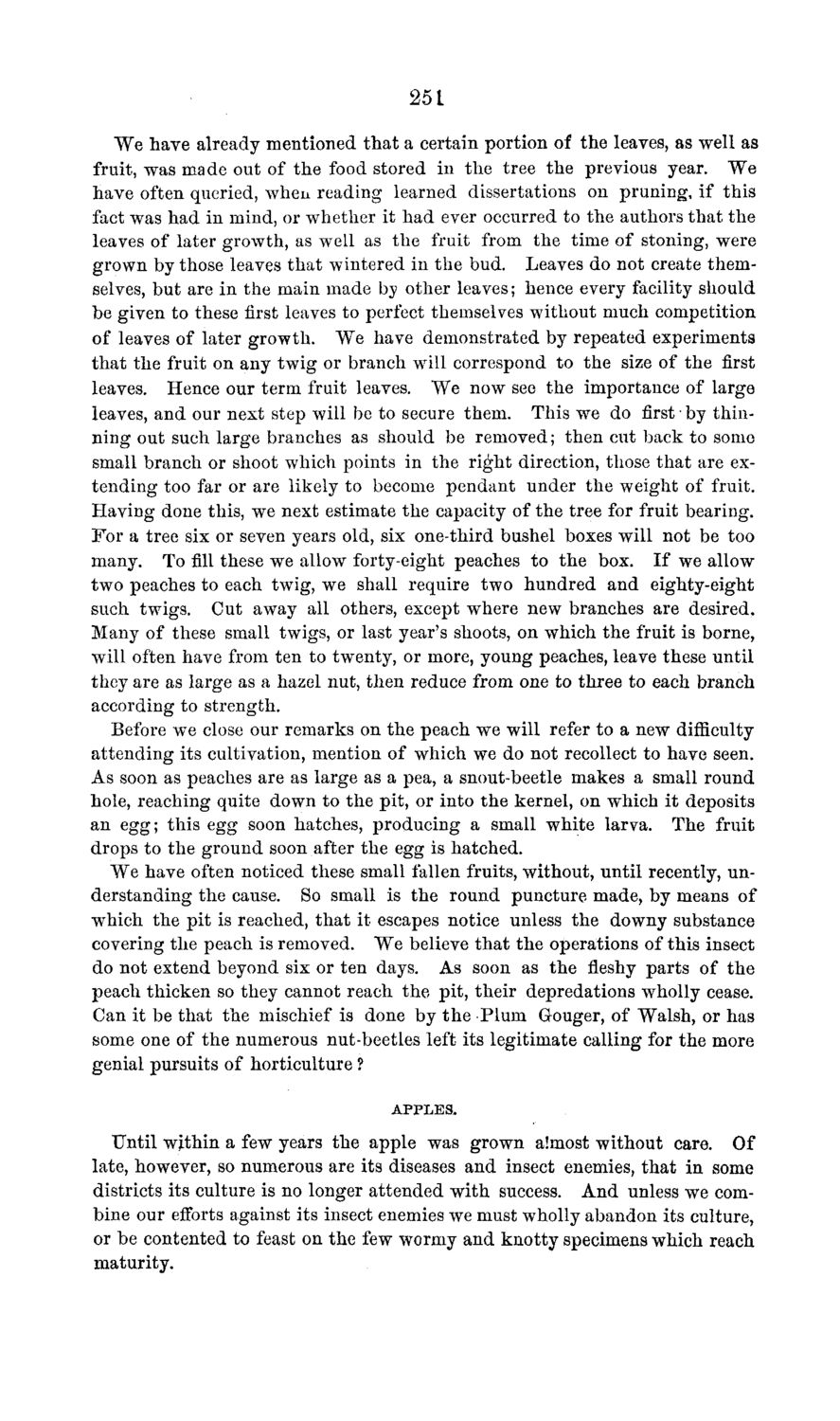| |
| |
Caption: Board of Trustees Minutes - 1869
This is a reduced-resolution page image for fast online browsing.

EXTRACTED TEXT FROM PAGE:
25 L We have already mentioned t h a t a certain portion of the leaves, as well as fruit, was made out of the food stored in the tree the previous year. We have often queried, when reading learned dissertations on pruning, if this fact was had in mind, or whether it had ever occurred to the authors that the leaves of later growth, as well as the fruit from the time of stoning, were grown by those leaves that wintered in the bud. Leaves do not create themselves, but are in the main made by other leaves; hence every facility should be given to these first leaves to perfect themselves without much competition of leaves of later growth. We have demonstrated by repeated experiments that the fruit on any twig or branch will correspond to the size of the first leaves. Hence our term fruit leaves. We now see the importance of large leaves, and our next step will be to secure them. This we do first • by thinning out such large branches as should be removed; then cut back to some small branch or shoot which points in the ri^ht direction, those that are extending too far or are likely to become pendant under the weight of fruit. Having done this, we next estimate the capacity of the tree for fruit bearing. F o r a tree six or seven years old, six one-third bushel boxes will not be too many. To fill these we allow forty-eight peaches to the box. If we allow two peaches to each twig, we shall require two hundred and eighty-eight such twigs. Cut away all others, except where new branches are desired. Many of these small twigs, or last year's shoots, on which the fruit is borne, will often have from ten to twenty, or more, young peaches, leave these until they are as large as a hazel nut, then reduce from one to three to each branch according to strength. Before we close our remarks on the peach we will refer to a new difficulty attending its cultivation, mention of which we do not recollect to have seen. As soon as peaches are as large as a pea, a snout-beetle makes a small round hole, reaching quite down to the pit, or into the kernel, on which it deposits an egg; this egg soon hatches, producing a small white larva. The fruit drops to the ground soon after the egg is hatched. We have often noticed these small fallen fruits, without, until recently, understanding the cause. So small is the round puncture made, by means of which the pit is reached, that it escapes notice unless the downy substance covering the peach is removed. We believe that the operations of this insect do not extend beyond six or ten days. As soon as the fleshy parts of the peach thicken so they cannot reach the pit, their depredations wholly cease. Can it be that the mischief is done by t h e P l u m Gouger, of Walsh, or has some one of the numerous nut-beetles left its legitimate calling for the more genial pursuits of horticulture ? APPLES. Until within a few years the apple was grown almost without care. Of late, however, so numerous are its diseases and insect enemies, that in some districts its culture is no longer attended with success. And unless we combine our efforts against its insect enemies we must wholly abandon its culture, or be contented to feast on the few wormy and knotty specimens which reach maturity.
| |